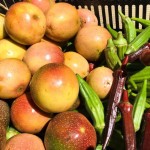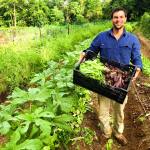Understanding the Need
Will food become the final frontier? It is estimated the world’s food production will need to double by 2050, a fact we see as both a threat & an opportunity.
A hungrier world with less land to farm…
By 2050 the footprint of the world’s cities will be the size of China and some of the world’s best farmland will be forever lost. This puts vital soil at risk. Already we have seen too much top soil and 70 % of its carbon lost from Australian farms and other nations are in a far worse state. If we continue at this rate most of the world’s top soil could be gone within two generations. Our methods of farming need to change if we are to feed ourselves into the future.
More crops to grow from less fertile land…
In the 1800s a German chemistry professor, Justus von Liebig, wrote a book on agriculture which helped to revolutionise the way we farmed. He claimed certain minerals should be supplied to compensate for soil deficiencies and that acids would make the minerals more available to the plants. Chemical companies were quick to seize the opportunity and began awarding grant money. It took just over 100 years for farmers to move away from centuries of tradition. Modern methods embracing fertilisers and chemicals became the norm. Today, we are only now discovering the true impacts of adopting the artificial methods for soil fertility and pest control.
Then there’s the waste…
Statistics vary depending on the source, but in Australia we throw away around $5 billion of food every year and somewhere around one third of the worlds’ food produced goes to waste. A travesty when, according to the United Nations, about 25,000 people die every day of hunger or hunger-related causes.
And the inefficiency…
Today, food travels further than a frequent flyer. Again studies and statistics vary but they consistently find much of our food distribution methods are unsustainable in the long-term. A Melbourne study of food miles showed 29 common items in a shopping basket travelled 70,803 km and that estimated greenhouse gas emissions from food trucks was the equivalent of 2,830 cars driving for a year.
Those most at risk…
Remote, rural & isolated communities are the most at risk. Their food travels further, often at a higher price and lower quality. The effects on community health can clearly be seen in community health factors such as heart disease, obesity and diabetes, which spike in these communities when people opt for cheaper, longer life, processed alternatives.
You don’t have to be an environmental scientist to see we have a problem. We can do better.



